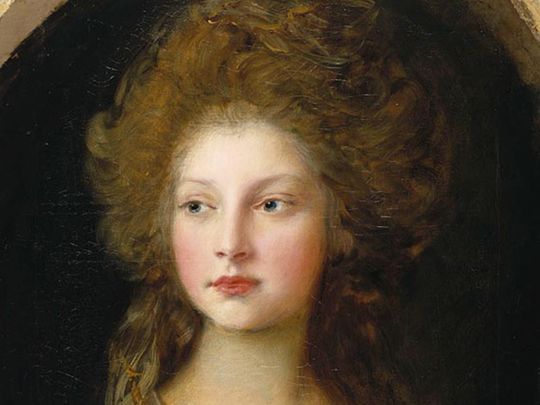
If you think today’s beauty and fashion trends are over the top, you may have to take a second look at the incredibly weird and fascinating beauty treatments of early 19th century Britain.
Click start to play today’s Spell It, where you can learn how women in the Georgian era would take extreme measures to ‘doll’ up.
From competing with each other for massive hairstyles to making sure they had porcelain white skin, here are some of the dubious fads the Georgians followed:
1. All white, all the time

Today’s pursuit of tanned skin would have confused people in the 18th and 19th centuries. A suntan showed that a person worked outdoors, whereas those who considered themselves to be from polite, wealthy classes always tried to remain indoors, away from the sun’s glare. It’s why both men and women pursued porcelain white skin – to extreme levels. In fact, according to a report in UK-based website History Extra, skin-whitening creams of the time included ingredients like horse manure and vinegar, along with toxic powders like lead. People would accentuate their whiteness by using blue colouring to highlight their veins, and would use lead mixed with carmine (a bright-red pigment) for their lips and cheeks. It’s no wonder then, that the most fashionable people began to suffer serious reactions to their makeup – from eye disorders to digestive problems.
2. Huge hair
If you’ve ever seen portraits of Georgian women, you’ve likely seen enormous, flamboyantly styled hair, teetering off the tops of their heads. Unlike men, women didn’t usually wear wigs – so all that hair was real. Both men and women worked hard to get fashionable pale hair by using hair powder, made from flour and puffed onto the head with a pair of bellows. It’s in this period that curling tongs were invented, helping stylish fashionistas add not just curls to their hair, but also wax fruit, flowers, and even model sailing ships as elaborate ornamentations.
3. Bright smiles
The aristocrats often ate all forms of sugary confections, so to ensure their teeth were white and gleaming, they used tooth powders – also known as dentifrice. The ingredients in these powders were highly suspect, and often included cuttlefish, bicarbonate of soda, and the mysterious ‘spirit of vitriol’, which turned out to be sulfuric acid – a highly corrosive mineral. While it did whiten teeth, it also stripped them of their enamel completely, causing rapid degradation and tooth trouble.
What do you think of these fashion trends? Play today’s Spell It and tell us at games@gulfnews.com.







